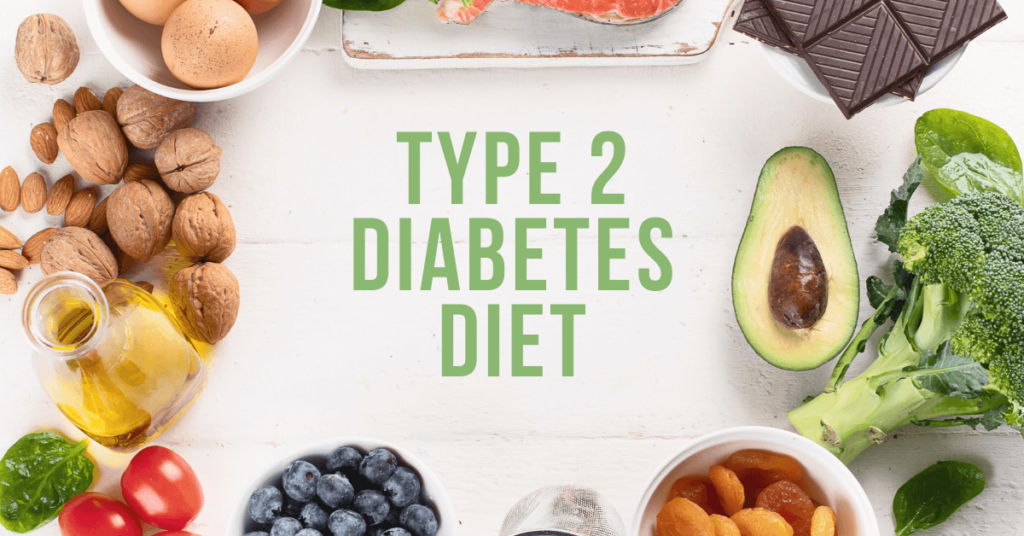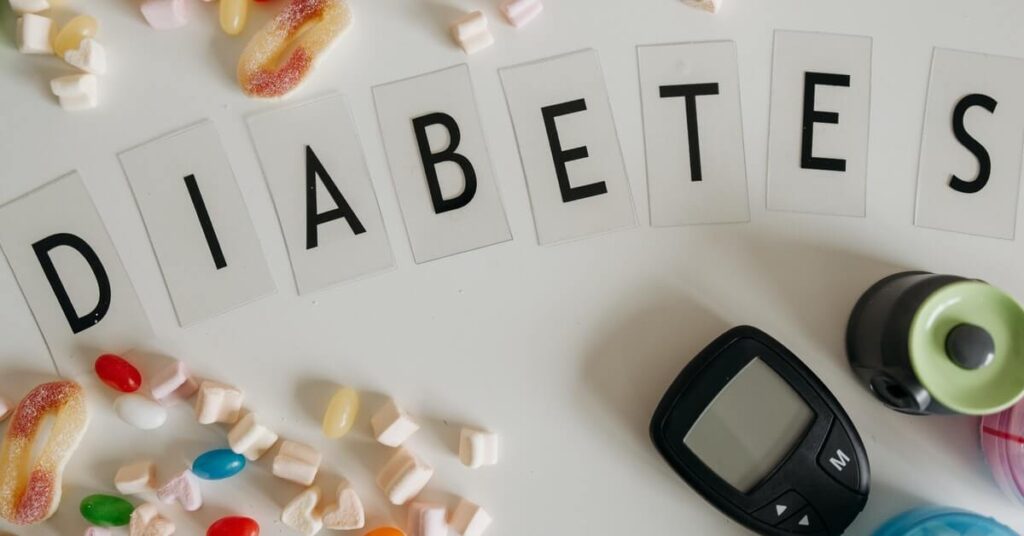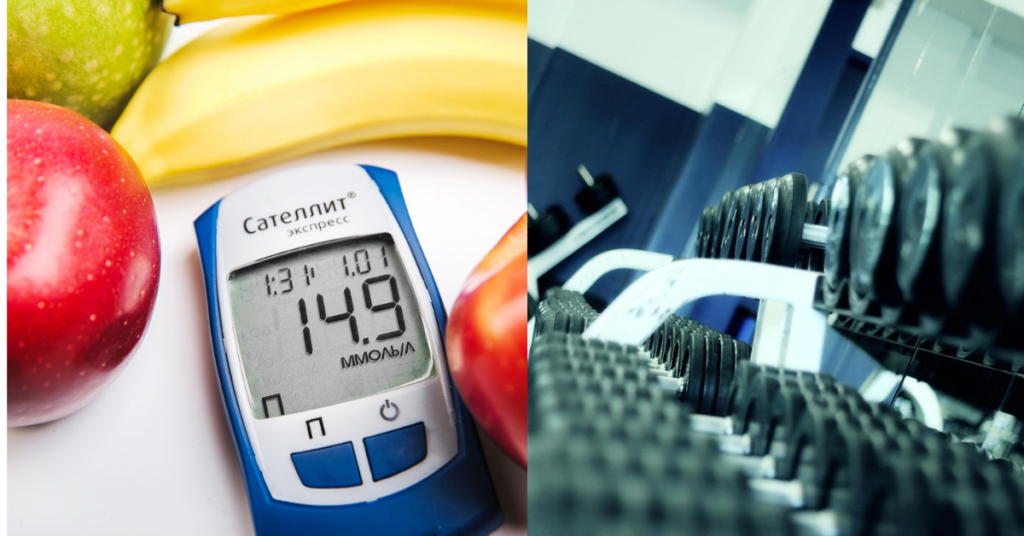Introduction
Hey reader, What query of yours has bought you here?
Let me guess!
You want to know what food should you include and what food you should avoid in your type 2 diabetes diet plan to manage your blood sugar level.
I think I am guessing right.
People can develop diabetes at any age either it’s type 1 diabetes or type 2 diabetes.
Having a proper type 2 diabetes diet plan manage your blood sugar and prevents all the complications of diabetes.
Before diving straight to answer your question first, let us discuss some key points.
What is type 2 diabetes?
Type 2 diabetes occurs when your body either doesn’t produce enough insulin or becomes insulin-resistant, affecting the glucose transfer in your cells.
This results in high blood sugar, leading to serious complications like heart attacks, kidney failures, nerve damage, etc. if not managed properly.
What is Diet?
People often think that the word ‘Diet’ refers to an unpleasant weight-loss regimen.
But it’s not true.
Diet can be defined as a particular food selection, especially as designed or prescribed to improve a person’s condition or prevent or treat a disease.
What is the glycemic index?
A glycemic index is a number from 0 to 100 assigned to food which is used to measure how much specific foods increase blood sugar levels. The value of pure glucose is given 100.
Introduction to Type 2 diabetes diet
If you live with type 2 diabetes, figuring out a balanced diet can help you manage your blood sugar levels and body weight.
The “What to eat” term is a bit confusing for those having diabetes. There is news all over the place about what food you should eat and what you should avoid for your health.
There is nothing you can’t eat if you have type 2 diabetes but you have to take care of what type of foods can keep your blood sugar in the target range.
A healthy diet is a balanced combination of carbohydrates, proteins, and fats.
You should keep some key points in your mind while choosing a healthy meal.
A diet plan should be :
- Low in carbohydrates and fats
- High in protein, fiber, and other minerals.
- Food with less added sugar
This article will help you choose the right foods to include in your balanced diet plan.
Read on the full article to find out what foods you should include and what food you should avoid with type 2 diabetes.
Foods to eat with type 2 diabetes
Sometimes, it can be harder to choose from the abundance of food and include it in your diet plan, especially if you are living with type 2 diabetes.
You have to bring some changes to your daily eating habits. You have to replace some unhealthy foods with healthy ones.
This will not affect your lifestyle much, but having healthy eating habits helps you prevent or manage type 2 diabetes. So, it is very essential to include healthy foods in your diet plan to avoid any complications.
You will not get caught with any other complications along with type 2 diabetes complications if you follow the right diet plan. This will be a win-win situation if you will see the positive part of it.
I am going to discuss with you what types of nutritional food you should include in your diet plan to avoid the long-term complications of type 2 diabetes.
It is always advisable to follow up with your medical consultant also before you prepare your diet plan according to your convenience.
Carbohydrates
Carbohydrate is the most essential nutrition for your body. It works as fuel.
Carbohydrate present in the food you intake is broken down into glucose by the digestive system which raises the blood sugar in your body.
It is mainly found in grains, bread, pasta, milk, sweets, fruits, and vegetables rich in starch.
Carbs or carbohydrates should be 45 to 60 percent of the daily diet.
Different types of carbohydrates
Carbohydrates are mainly divided into two categories :
- Simple Carbohydrate ( Sugar)
- Complex Carbohydrate ( Starch & Fibre)
Simple Carbohydrate
Simple carbohydrates or sugar are broken down easily and quicker by the digestive system in your body which can cause a sudden spike in the blood sugar because it contains short chains of sugar molecules. That’s why simple carbs are a short-lasting source of energy.
Being a type 2 diabetic you should avoid the intake of simple carbs as much as possible like sugary products and processed food with added sugar.
Simple carb foods you can consume :
- Fruits and Vegetables: You can have fruits and vegetables containing simple carbs because they are rich in other micronutrients.
- Dairy products: Milk and milk products also contain lactose which is a form of simple carb, but it is highly rich in protein, calcium, and vitamin D. So, dairy products should be included in your diet.
Complex Carbohydrate
Your body’s digestive system takes longer to break down complex carbs because it contains long chains of sugar molecules.
Complex carbs are a stable source of energy that can keep you going throughout the day. It is higher in fiber and starch which provide more lasting energy. Fiber helps to control cholesterol.
Complex carb foods you can consume
- Fiber-rich fruits: Fruits with skin and seeds are high in fiber like apple, corn, berries, etc.
- Whole grain: Whole grains are a good source of fiber like whole-wheat pasta, whole-grain bread, whole-grain cereals ( oats, whole wheat), etc.
- Fiber-rich and starchy vegetables: Broccoli, leafy greens, carrots, peas, corn, sweet potatoes, pumpkin, etc. are great sources of fiber and starch.
- Beans: Beans are a great source of fiber as well as folate, iron, and magnesium nutrients.
Carbohydrate intake should be low glycemic load and consumed primarily from plant sources to control your blood sugar.
It can lead to serious complications if your blood sugar wouldn’t be controlled over a long period. So, always avoid too much carbs consumption.
“Always talk to your dietician or diabetic consultant to determine the right carb counting according to your conditions before including it in your diet.”
Protein
It is one of the most essential macronutrients which is used by the body to build, repair, and maintain most of your body’s tissues and organs and is necessary for immune system function.
This micronutrient is good for steady energy with little effect on blood sugar. It keeps blood sugar stable and can help with sugar cravings. You can feel full after eating a balanced protein dietary food.
In addition to helping the body grow, protein can be broken down into glucose which is used for energy The process is known as gluconeogenesis.
Protein can be categorized into two-part. The first is a plant-based protein that is best to include in your meal plan or snacks and the second is an animal-based protein such as red meat that may contain unwanted fat which is responsible for blood sugar rise.
The American Diabetes Association(ADA) recommends lean protein low in saturated fat for people with diabetes.
Protein-rich food which you can include in your diabetic diet as a meal or snacks:
- Beans such as kidney, black, or pinto beans
- Legumes
- Eggs
- Fish and seafood
- Peas
- Tofu and tempeh
- Soy foods
- Edamame
- Smoked salmon slice
- Organic dairy products
- Lean meat such as chicken and turkey
The protein needs vary based on factors such as height, weight, activity level, and state of health. Overall a person needs 10-35% protein in his daily diet calories.
It is always advisable to use more and more plant-based protein rather than animal-based protein.
Fats
Fat is not the enemy when it comes to including this in your diet for type 2 diabetes. The third most essential macronutrient is healthy fats. You should include the right types of fats in your daily diet if you want to reduce the risk of type 2 diabetes.
There are four main types of fats – saturated, trans, monounsaturated, and polyunsaturated fats.
The American Diabetes Association recommends including more monounsaturated and polyunsaturated fats than saturated or trans fats in your diet.
The frequent use of saturated and trans fats results in increasing blood cholesterol and blood sugar for a diabetic.
Here are some examples of healthy fats foods which you can include in your daily diet routine.
- Avocados
- Nuts like almonds, cashews, pecans, walnuts, and peanuts.
- Peanut butter
- Olives
- Plant-based oils like soybean oil, corn oil, olive oil, and sunflower oil
- Seeds like flaxseeds and chia seeds
- Fish like salmon and tuna
- Tofu
20-35% of calories should come from fats for adults, and less than 10% should come from saturated fats.
This can vary from person to person, so you should always talk to a registered dietician, nutritionist, or health care provider to figure out what targets are right for you.
Foods to avoid in type 2 diabetes
Before making a healthy diet plan, you should always keep in mind that you have to avoid some food items which may cause a sudden blood sugar level rise which may create serious complications.
Take a look that what foods and types of foods you have to avoid in type 2 diabetes.
- Sugary products like sweets and soda.
- White carbs like white rice, pasta, and bread.
- Full-fat dairy products like full-fat yogurt, ice cream, cream cheese.
- Packed snacks and baked foods.
- Oily and fried foods.
- Sugar-sweetened beverages.
- Trans fats like margarine, peanut butter, creamers, and frozen foods.
- Simple carbohydrates.
These are some highlighted food items and their types which should be avoided to be included in your diet plan.
One term should also be noticed that you have to maintain a safe distance from alcohol, smoking, and drug addictions if you don’t want to get in trouble with type 2 diabetes.
Take Away
You already know uncontrolled diabetes has many serious complications or consequences including heart diseases, blindness, and other complications. So, you have to maintain a healthy lifestyle to avoid these complications.
I hope this article helps you to prepare a healthy diet plan for type 2 diabetes. You can add healthy food items according to your convenience.
Also, you have to keep yourself physically active like running, whole-body workout in gym or home, swimming, etc along with your healthy diet.
That’s all, Stay Safe! Stay Healthy!,



